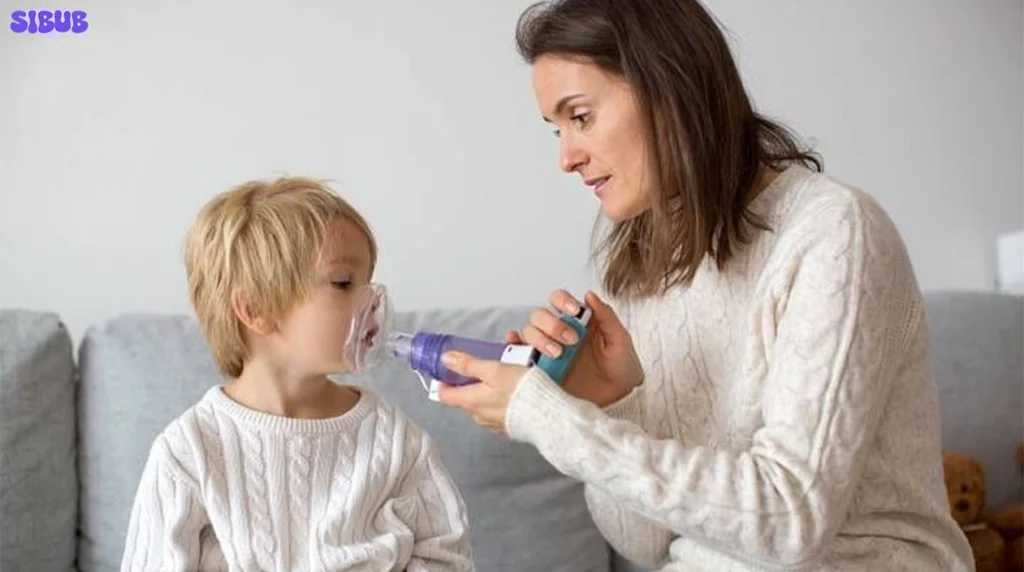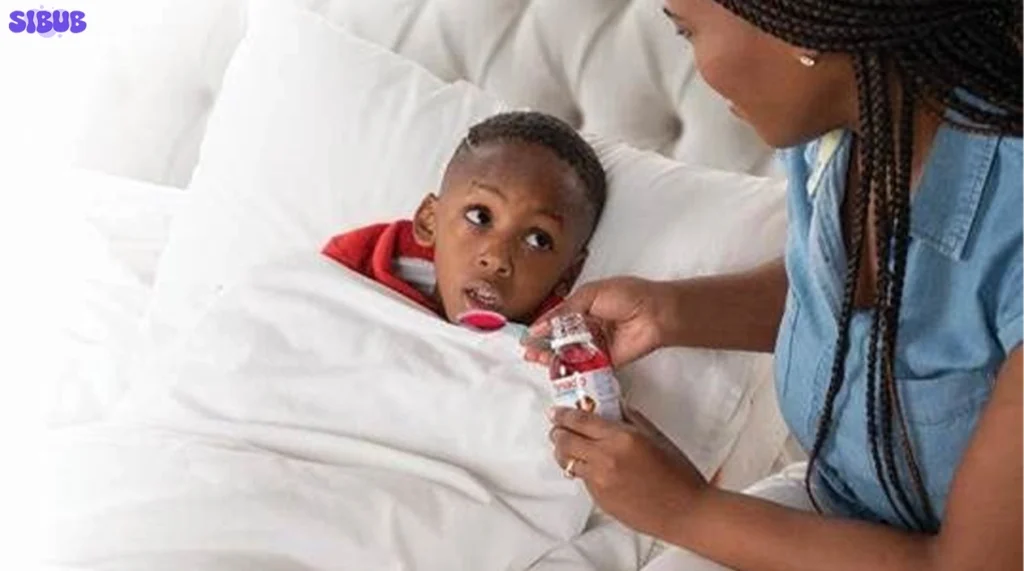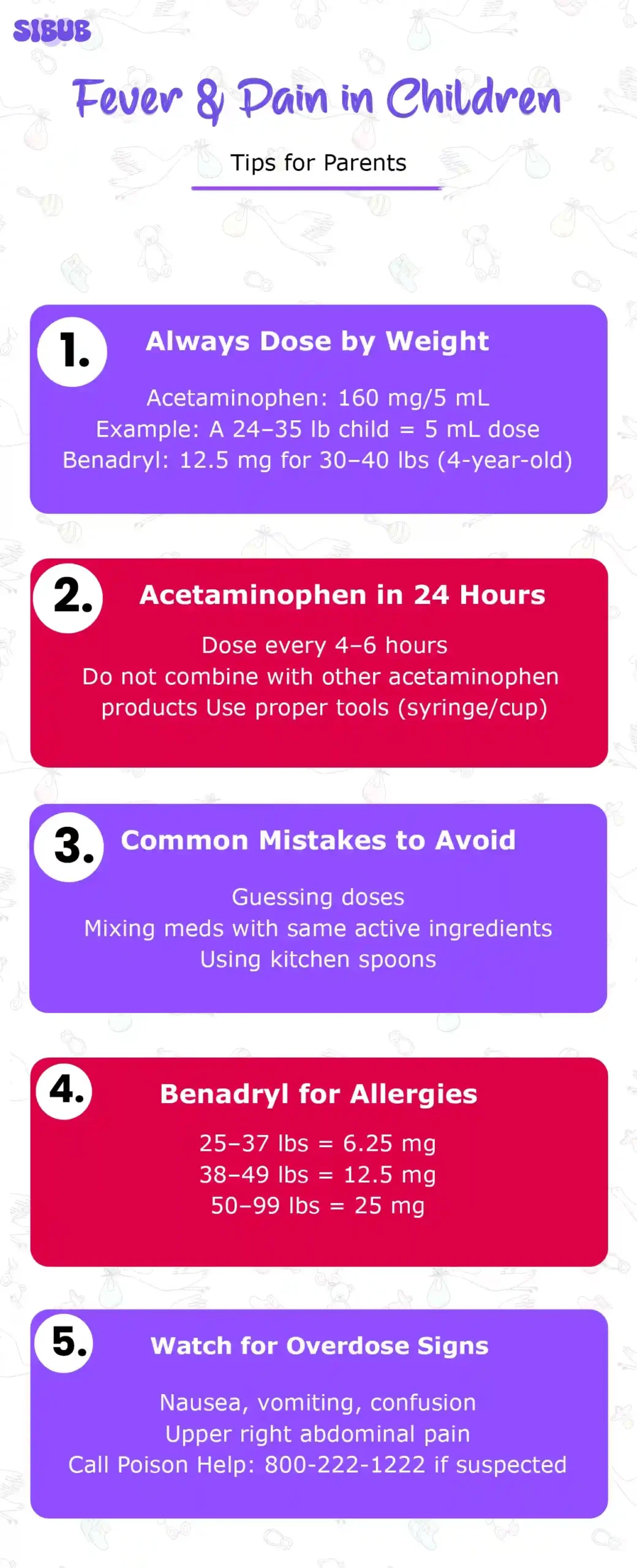Fever or pain can be tough on kids, and even tougher on parents trying to help them feel better. One of the most common medications used is acetaminophen (also known as Tylenol®). But dosing can be tricky. Giving the wrong amount is one of the most frequent mistakes parents make. If you’re checking for childrens Benadryl dosage, managing a cold, or treating a fever, it’s important to be careful about what and how much medicine you’re giving your child.
In this guide, you’ll find easy-to-follow charts and expert tips on how to give the right amount of acetaminophen based on your child’s age and weight. We’ll also touch on other medications like Benadryl (diphenhydramine) and how to avoid overdosing in children.
Why Acetaminophen Matters
Acetaminophen is widely used to reduce fever and ease pain in kids. It’s sold under different names like Tylenol®, Feverall®, and Panadol®. It’s available in many forms: liquid, chewables, dissolvable powders, and tablets.

Visit this: Top Benefits of Summer Camp for Kids
But even though it’s common, it can be dangerous if given incorrectly. That’s why it’s important to always read labels and follow dosing instructions carefully.
How Often Can You Give Acetaminophen?
- Every 4 to 6 hours, as needed for pain or fever.
- No more than 4 doses in 24 hours.
- Avoid combining with other medications that contain acetaminophen.
- Use only one acetaminophen product at a time.
Acetaminophen Dosing by Weight (Preferred)
Doctors recommend using your child’s weight to decide the correct dose. If you don’t know the weight, then use age as a backup.

For Infants (0 to 3 Years Old)
| Weight | Age | Infant’s Acetaminophen (160mg/5mL) |
| 6–11 lbs (3–5 kg) | 0–3 months | 1.25 mL |
| 12–17 lbs (5–7 kg) | 4–11 months | 2.5 mL |
| 18–23 lbs (8–10 kg) | 12–23 months | 3.75 mL |
| 24–35 lbs (11–15 kg) | 2–3 years | 5 mL |
Use the syringe that comes with the medicine. Don’t use kitchen spoons.
Click here : Using OTC Drugs Runny Nose Medicine to Treat Cold
For Children (4 Years and Older)
| Weight | Age | Liquid Dose (160mg/5mL) | Chewables (160mg) | Adult Tablets (325mg) |
| 36–47 lbs (16–21 kg) | 4–5 yrs | 7.5 mL | 1½ tablets | — |
| 48–59 lbs (22–26 kg) | 6–8 yrs | 10 mL | 2 tablets | 1 tablet |
| 60–71 lbs (27–32 kg) | 9–10 yrs | 12.5 mL | 2½ tablets | 1 tablet |
| 72–95 lbs (33–43 kg) | 11 yrs | 15 mL | 3 tablets | 1½ tablets |
| 96+ lbs (44+ kg) | 12+ yrs | 20 mL | 4 tablets | 2 tablets |
For 12+ years, adult doses apply. Be careful with tablet strength (325mg or 500mg).
Avoid These Common Mistakes
Giving medicine should never be guesswork. Here’s how acetaminophen overdoses often happen:
- Wrong measuring tool: Always use the dropper or syringe provided.
- Mixing meds: Don’t combine with other cold or flu medications that contain acetaminophen.
- Wrong product: Giving adult medication to children can be dangerous.
- Double dosing: Make sure two caregivers aren’t unknowingly giving extra doses.
- Thinking more is better: Stick to the recommended amount. More doesn’t mean faster relief.
Warning Signs of Overdose
Too much acetaminophen can hurt your child’s liver. Watch for:
- Nausea or vomiting
- Extreme tiredness or confusion
- Pain in the upper stomach (right side)
If you suspect an overdose, call Poison Help at 800-222-1222 or seek emergency care immediately. Bring the medication bottle with you.

Check this: Growth Mindset vs Fixed Mindset Explained
Measuring Tools Matter
Never use kitchen teaspoons; they vary in size and can lead to overdosing. Use:
- A syringe or dropper for babies and toddlers.
- The cup that comes with the bottle is for older kids.
Still unsure? Ask your pharmacist or pediatrician for help.
Acetaminophen vs. Children’s Benadryl Dosage
Parents often treat both fever and allergy symptoms together. While acetaminophen is great for fever and pain, you might also be considering Benadryl for things like itchy eyes or a runny nose.
Let’s break down how children’s Benadryl dosage works.
Children’s Benadryl Dosage (Diphenhydramine)
Diphenhydramine is the active ingredient in Benadryl. It’s used for allergies, hay fever, hives, and sometimes even for motion sickness.
Benadryl Dosage by Weight – Children
| Weight | Diphenhydramine Dose |
| 20–24 lbs | 5 mg |
| 25–37 lbs | 6.25 mg |
| 38–49 lbs | 12.5 mg |
| 50–99 lbs | 25 mg |
| 100+ lbs | 25–50 mg |
Be sure to use children’s Benadryl dosage by weight, not just age.
Warning: Do not give Benadryl to children under 2 years unless a doctor tells you to.
Benadryl for 4-Year-Olds
For a 4-year-old (usually weighing between 30–40 pounds), the typical diphenhydramine dose is 12.5 mg. You can find this in:
- 5 mL of liquid Benadryl (12.5 mg/5 mL)
- One chewable tablet (12.5 mg)
Always check the label and confirm with your doctor if unsure.
Click this blog: Hand, Foot, and Mouth Disease: Is It Contagious? | Key Facts
Benadryl Dosage for Adults: 25 mg
For adults and kids over 12 years, the standard Benadryl dose is:
- 25 mg to 50 mg, every 4–6 hours as needed.
- Don’t take more than 6 doses in 24 hours.
Be cautious when combining Benadryl with other medications can cause drowsiness or other side effects.
Quick Tips for Parents
- Always read the label.
- Stick to one medicine at a time unless your doctor advises otherwise.
- Write down doses and times given, especially if more than one adult is helping.
- Store meds safely out of your child’s reach.
- Don’t rely on memory; use the charts above or save a printable version.
Final Thoughts: Keep it Simple, Keep it Safe
When it comes to your child’s health, being careful is always worth the extra minute. Use children’s Benadryl dosage and acetaminophen charts like a guide, not a guess.
Whether it’s fever, pain, or allergies, dosing the right way keeps your child safe and helps them feel better, faster.
Bookmark this page or print out the tables for easy access the next time your child isn’t feeling well. And remember, when in doubt, ask your pediatrician.
